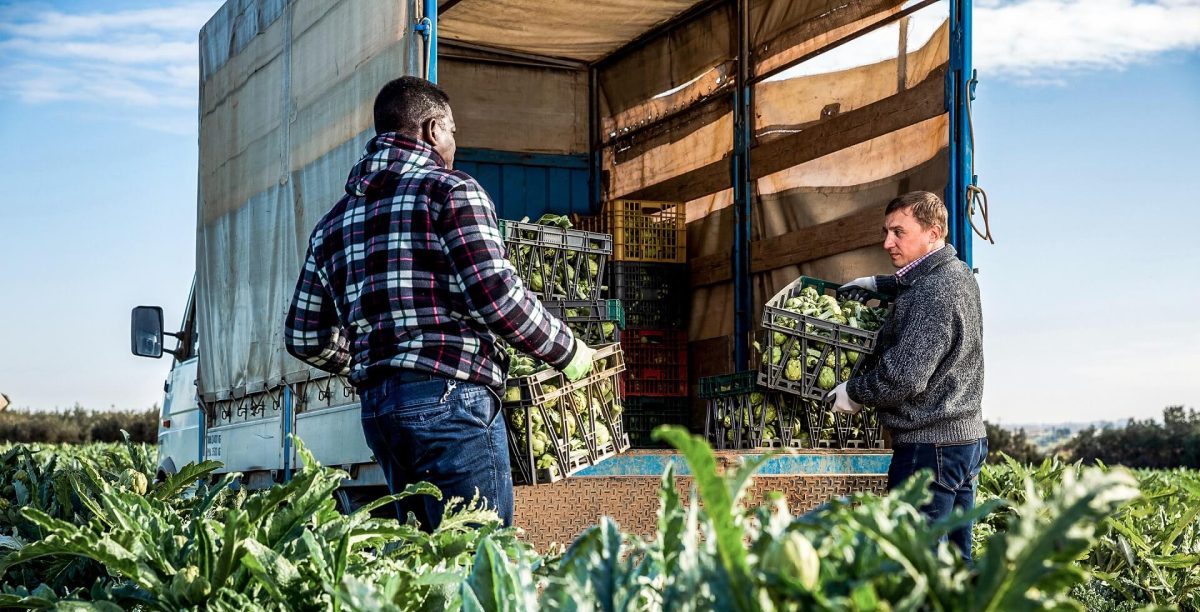The foodservice sector has not been short of crises to deal with in recent years. Climate change, Covid closures and subsequent staffing challenges serve well to illustrate a tumultuous time for restaurants.

Image: Shutterstock | artjazz
Now, as the world emerges from a global pandemic, supply chain problems is the latest issue to engulf an already beleaguered industry. Among the causes is the continued health checks introduced due to the pandemic are holding up shipments of food and materials.
A September survey from the National Restaurant Association in the US found that 95% of restaurant operators had experienced supply delays or shortages of key food or beverage items during the past three months. A further 75% were forced to change menu items due to supply chain issues.
There is no foodservice market segment that has escaped the impact of the supply chain challenges – from QSR, casual dining and fast-casual to fine dining, hotels, sports, education, healthcare and business. “All sectors of foodservice have been severely impacted,” says. William Bender FCSI, founder and principal of W.H. Bender & Associates. “Any product or service that a user or purchaser needs or wants is being affected by inventory shortages or transportation delays.”
In August, McDonald’s announced it had run out of milkshakes and bottled water in England, Scotland and Wales. The American fast-food giant is not alone; Nando’s had to temporarily close stores due to a lack products. It is a truly international problem, from Korean fast-food chain Lotteria having to substitute fries with cheese sticks to KFC in the US taking chicken tenders off the menu due to a failing logistics chain.

Image: AdobeStock | Brent Hofacker
A vicious cycle
No part in the foodservice supply chain has been untouched by the crisis, says Karen Malody FCSI, founder and president of Culinary Options foodservice consultancy in Portland, OR.
“All aspects of required elements, essential for foodservice operations, have been impacted. From packing companies not able to manufacture containers for food nor supply adequate take-out containers,” she says.

Image: RATIONAL AG
“The distribution network has been interrupted due to lack of drivers and, in many cases, manufacturers of goods and food have been left understaffed. It all leads to a dearth of essential goods. Operators often find that cleaning supplies are hard to find, essential for health and safety today. All of this leads to rising prices at every level, forcing the end user to pay more. It is a vicious cycle.”
Add to this mix the growing problem of a global shortage of skilled labor. As Malody says, “It would be remiss to not mention that the supply chain of foodservice workers has diminished to a point of critical concern.”
A crisis compounded by Brexit
As the world comes through this painful extended period of Covid and consecutive lockdowns restaurants in all parts of the world have experienced significant delays on deliveries, but nowhere more so than the UK, due to Brexit.
The UK leaving the European Union has resulted in complications around borders and duties as well as visas – not enough truck drivers mean that food products can’t be moved from A to B and a lack of the seasonal labor that would arrive to pick fruit and vegetables – More than 200,000 European workers have returned to their countries – has seen tons of fresh produce go to waste.

Image: Shutterstock | Avigator Fortuner
In truth it is not easy to find a positive spin on the current challenge for the wider foodservice sector right now. Bender says the business and industry owners, leaders and managers he has talked to are still in survival mode. “They are focused on the getting through until the end of the shift and week. They do not see any improvement until middle of 2022,” he says.
The supply chain problems have accelerated some changes that were already in the ascendancy before the Covid pandemic. Chefs, responding to the climate crisis, had started forging closer relationships with local producers and using raw materials that have to travel shorter distances. It ensures a steady supply of produce, whatever happens, and keeps the farmers in business.
One such chef Eneko Atxa of the Bilbao restaurant Azurmendi Spain, which holds three Michelin stars sources most of his produce from within a close radius on his restaurant. “This kind of circular gastronomy is very trendy right now, but for me it has always made sense to work with people that are near us who we have a daily contact with,” he says.
Sieh dir diesen Beitrag auf Instagram an
While there is no silver bullet to the problems right now, Malody advises operators to take a multipronged approach. “First, they should collaborate closely with food vendors: reduce menu size and focus on ingredients they know they can get, even if that means new items that weren’t previously considered,” she says. “Reduce operating hours in order to allow excellence during the hours they can be open for service. Plan ahead with all suppliers to determine what will be available and alter menu and service accordingly. Share with them your volume projections for the future.”

IMAGE: AdobeStock | SYDA PRODUCTIONS
Bender believes the sector will need some major changes and a steady focus to navigate the problems. “Foodservice will have to adapt to smart common-sense design, and operational changes to their own facility, operations, brand and of course leadership of team members,” he says. “We will need to model, instil confidence in and actually be highly visible with all habits, protocols, and systems to execute and achieve 100% team member safety, food safety, hygiene, cleaning and sanitizing.”
Above all, says Malody, despite all the frustration and inhibiting factors, operators must stay positive and pay special attention to staff. “Never has there been a greater need for community, positivity, and caring culture,” she concludes.

















Pingback: Lockdown, stock and barrel | KTCHNrebel